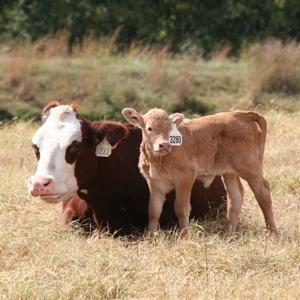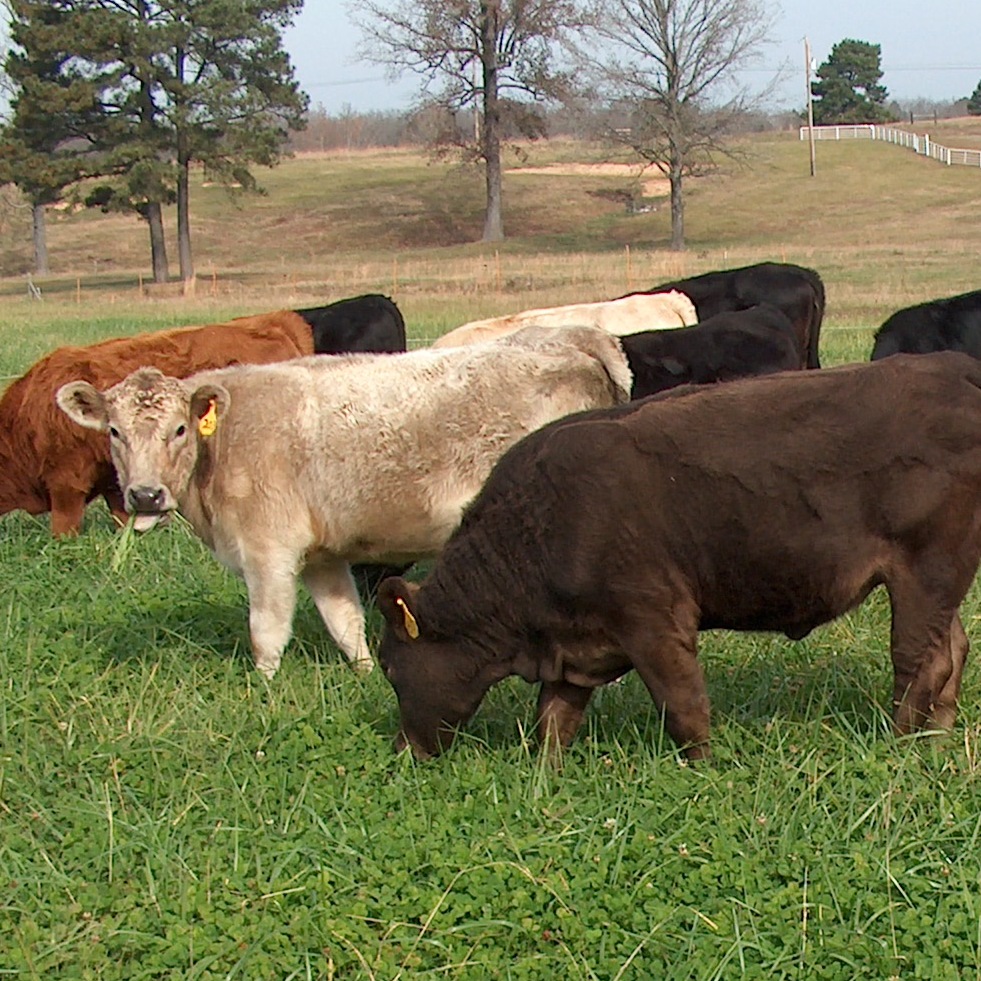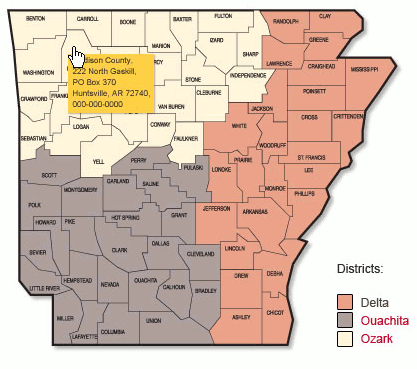Contact
Phone: (479) 575-4337
Email: bkutz@uark.edu
Stay Connected
Beef Cattle Selection and Genetics

Animal Agriculture is one of the largest industries in the United States and is second to none in economic importance. It is very important that producers understand the type of animals that are most efficient and most valuable in production. The beef cattle industry is composed of six basic segments:
-
-
- Purebred Breeder
- Commercial Producer
- Stocker or Backgrounding Operations
- Cattle Feeder
- Beef Packer
- Retailer
-
- The purebred breeder maintains seedstock to provide bulls and, occasionally, females for the commercial producer.
- The commercial producer provides feeder calves and yearlings to the stocker operator who, in turn, furnishes the cattle feeder who provides the packer with finished cattle ready for slaughter.
The packer slaughters the cattle and provides the retailer with either dressed carcasses or wholesale cuts from these carcasses. The profits that accrue to all segments of the beef cattle industry depend on continued improvement in productive efficiency and carcass merit.
Major Performance Traits for Beef Cattle
All traits of economic value should be considered when selecting beef cattle. The major traits influencing productive efficiency of desirable beef are:
-
-
- Reproductive Performance or Fertility
- Maternal Ability
- Growth Rate
- Feed Efficiency
- Body Measurements
- Longevity
- Carcass Merit
- Conformation or Structural Soundness
-
The use of genetic prediction (EPD's) is one of the most powerful tools in the hands of the beef cattle producer. It is dependent upon the producer's ability to understand the use of EPD's in selecting breeding stock with superior genetic merit to increase the proportion of genes having the desired effect on traits of economic importance.
The concept of an EPD is very easy to understand because it is truly the expected progeny difference in performance.
EPD's are more valuable than individual performance records, within herd ratios or performance tests because all of these pieces of information are taken into consideration in calculating an EPD.
Although the methodology is complicated and the initial contribution of time is substantial, EPD's are actually very convenient to use.
- Beef Cattle Production Chapters 3 and Chapter 4
- Understanding and Using Expected Progeny Differences (EPD's)
Herd Sire Selection
Improvement of the next generation calf crop is dependent upon the breeding decisions you make. Herd sire selection should be a thought-provoking and profit-driven decision process.
Males account for approximately 90% of the gene pool, contributing more to the genetic makeup of a herd in one breeding season than a cow contributes in her lifetime.
Selecting genetically superior sires is the fastest approach to herd improvement and ultimately bottom line profitability.
Not every bull will fit your production scenario. Resources and goals are different for each cow-calf operation. Nonetheless, sire selection should target an acceptable combination of traits that complement the strengths and weaknesses of the cow herd and match markets. Ask questions that pertain to your particular production situation. What are your target markets? Are you selling all calves at weaning? If so, what color does that market value the most? Are you planning to background your calves and send them through the feedlot? Are you going to retain any replacement heifers? Are you breeding both heifers and cows? What are your available labor and forage resources? Answers to these questions will aid you in determining the selection efforts you may want to apply towards economically important traits such as growth, carcass traits and possible maternal performance. Base the type of sire selected on the purpose of your breeding plan.
Sire summaries are published by breed associations to provide current genetic evaluations on progeny-proven sires. While the sire summary formats may vary among breeds, they all are designed to use the best linear unbiased prediction procedures to produce expected progeny differences (EPDs) for all cattle that have legitimate performance records. Across-breed (AB) adjustment factors have been calculated for growth traits and maternal milk since 1993. Adjustment factors for carcass traits have been calculated since 2009; to be included, breeds must have carcass data in the U.S. Meat Animal Research Center (USMARC) database and report their carcass EPDs on an actual carcass basis using an age-adjusted endpoint.
Bulls of different breeds can be compared on the same EPD scale by adding the appropriate adjustment factor to the EPDs produced in the most recent genetic evaluations for each of the 18 breeds.
Replacement Selection and Cow Herd Performance

Acquiring or raising high quality replacement heifers is an essential and major investment for the cow-calf producer.
The replacement heifer becomes the genetic building block for the cow herd. The producer hopes that a replacement heifer will become a fertile cow that produces a calf, annually, for a long time. Proper selection and culling of individual animals within a cow-calf herd is important for genetic improvement and enterprise profitability.
The Cow Herd Performance Testing Program gives beef cattle producers the opportunity to determine and evaluate the current level of herd productivity and properly rank individual animals in the herd for economically relevant traits. The Cow Herd Performance Testing Program emphasizes the importance of record keeping and making selection/culling decisions based on performance measurements.
The program involves the collection of records (weaning weights, cow weights, muscle scores, body condition scores, hip heights, etc.) to objectively measure and evaluates cattle performance. Recommendations for selection of replacement heifers are based on 205-day adjusted weaning weight, frame size, muscle score, and other relevant factors. Information from the cow herd performance testing program is used to complement visual appraisal of structural soundness and conformation in selecting replacement females for the herd. Recommendations are developed for culling mature cows based on most probable producing ability, cow efficiency, frame size, structural soundness, pregnancy status, health, and disposition among other factors.
Calf performance differences may also be compared among herd sires. Dramatic calf weaning weight improvement is one of the benefits of the program that has been realized by many past and current participants.


